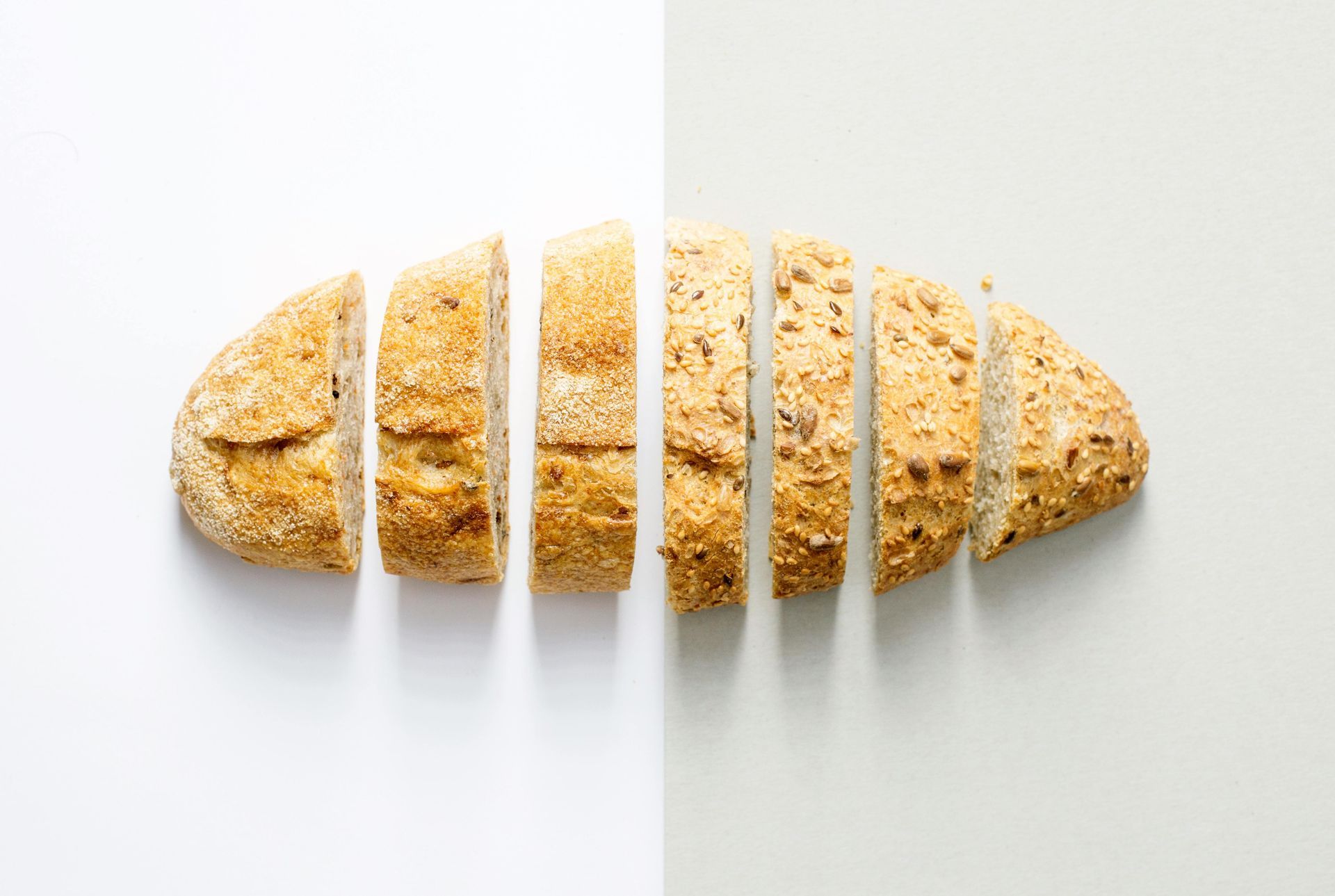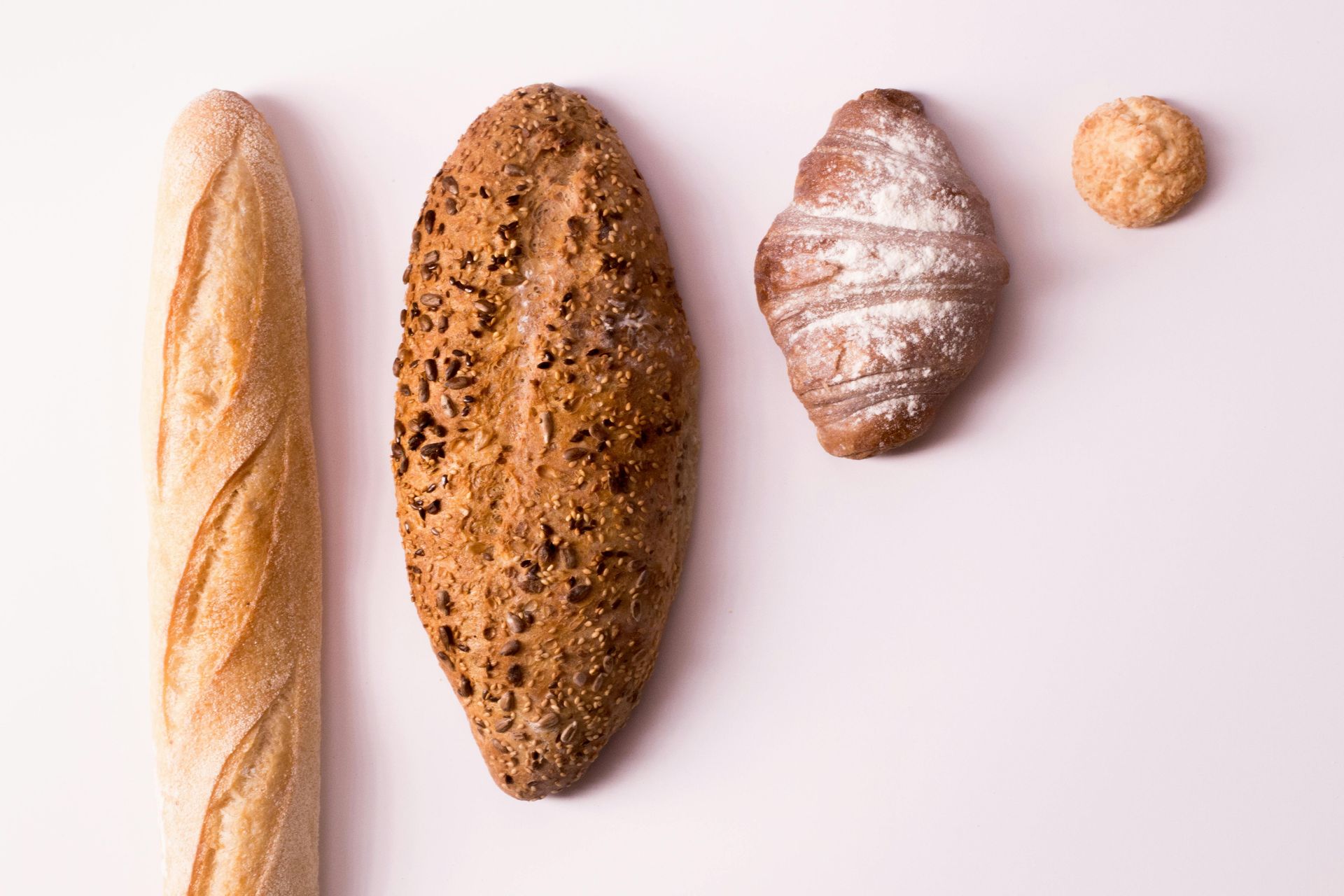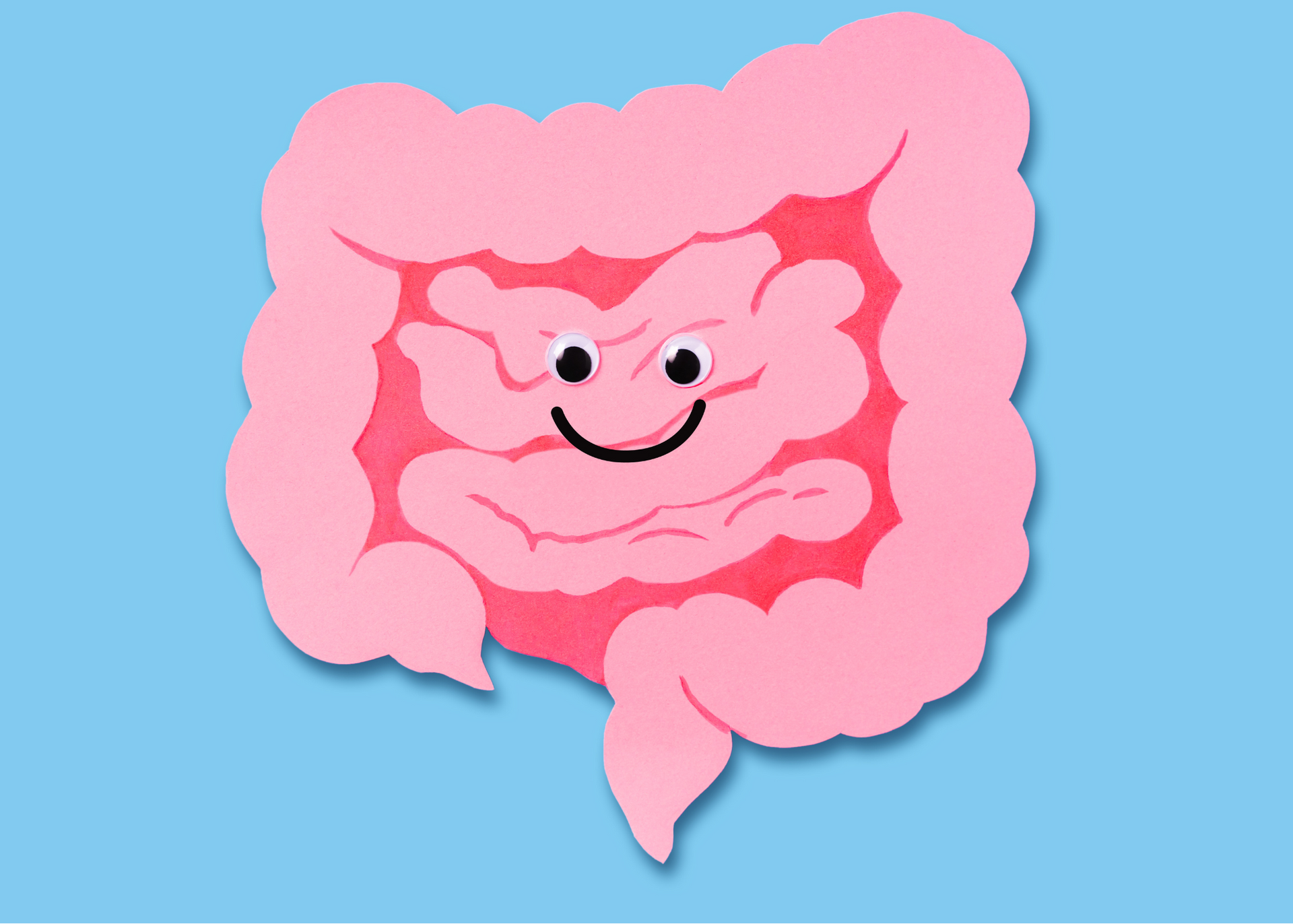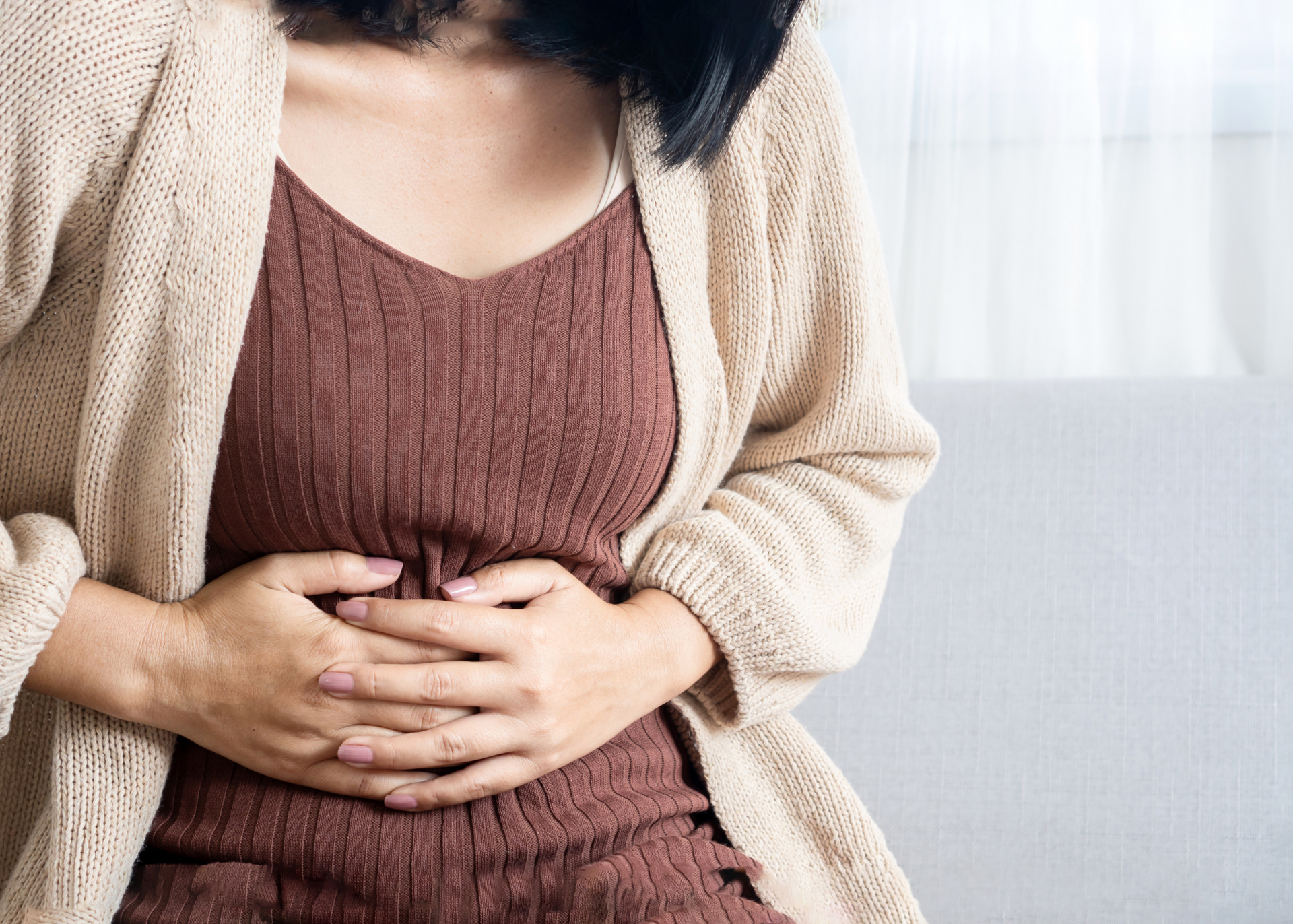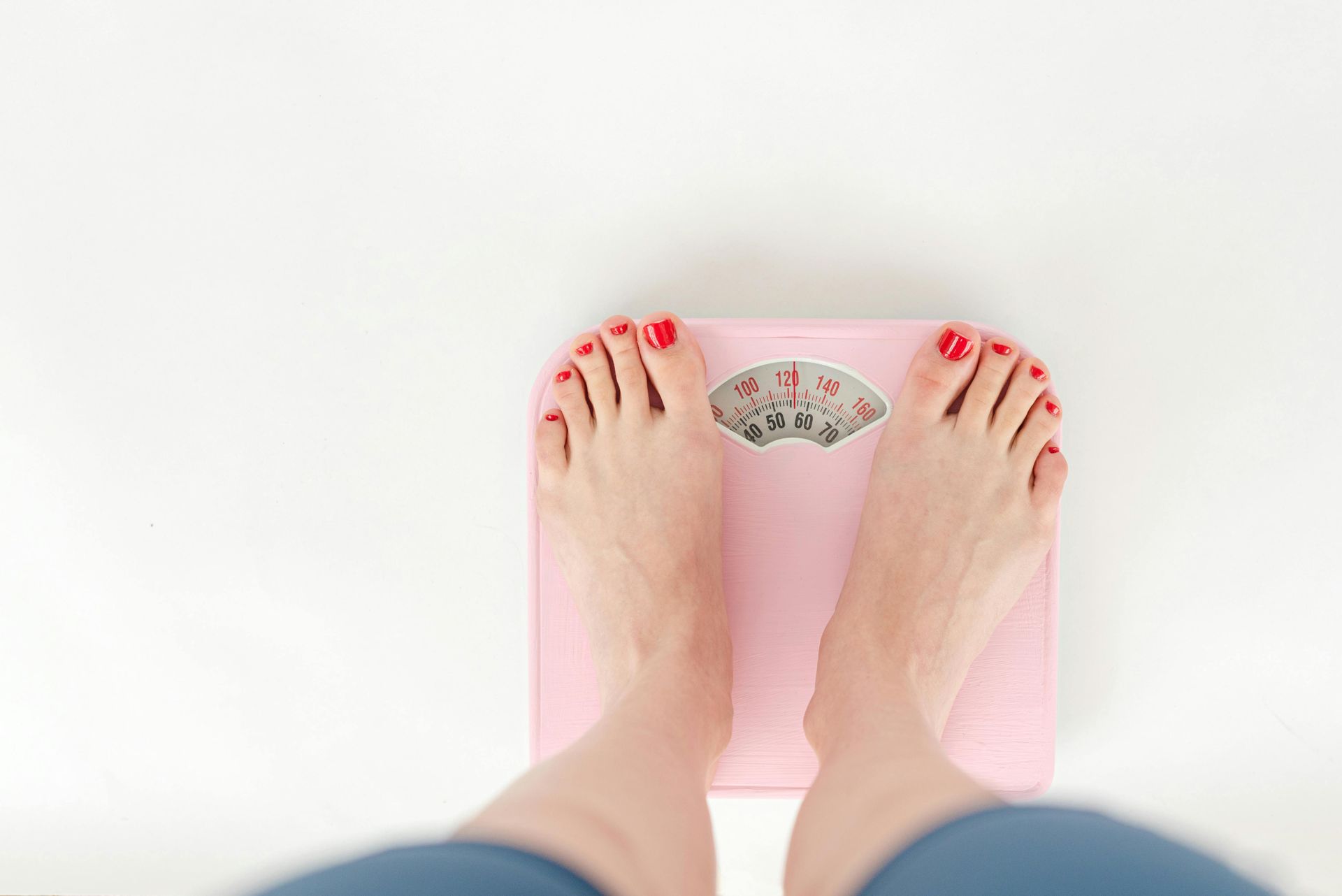The Ratio to Blame for Your Inflammation

Inflammation isn’t always a bad thing. Short-term inflammation increases blood flow, eliminates toxins, and initiates the repair of damaged tissue. It is helpful for protection as well as healing.
Chronic Inflammation
But if inflammation persists? Then we run into issues. Chronic inflammation can manifest in many ways.
- Weight gain: Inflammation can cause leptin resistance, a hormone that regulates metabolism and appetite.
- Disease: Inflammation increases the risk of fatty liver disease, diabetes, inflammatory bowel disease, rheumatoid arthritis, heart disease, and cancer.
- Pain : Inflammation is directly responsible for pain – migraines, headaches, neck pain, knee pain, you name it!
- Aging : Inflammation ages us faster. It speeds up the breakdown of collagen and elastin, which means those smile lines are well on their way to permanent wrinkles.
- Cognition : Inflammation has a huge impact on how our brains age. It slows down the creation of new brain cells and speeds up the destruction of brain cells.
- Mood : Long-term inflammation can alter chemical concentrations in the brain. These changes can lead to irritability, low libido, anxiety and depression.

The Omega Ratio
Ok ok so it’s obvious inflammation is bad news. But what can we do about it?
Consider what you’re ingesting three times a day (four or five for all my snackers out there). Diet plays an enormous role.
Dietary fat can have one of the biggest impacts. The standard American’s diet is high in omega-6’s and low in omega-3’s, which promotes inflammation. A 1:1 ratio is ideal. The average American’s diet is a 17:1 ratio!
To reduce your omega-6 intake, reduce your intake of high omega-6 oils. These oils are highly concentrated sources of omega-6’s and they are typically processed with high heat and chemical solvents , making them even more inflammatory.
High omega-6 oils:
- Vegetable (often a blend of the following)
- Safflower
- Sunflower
- Peanut
- Corn
- Soybean
- Grapeseed
The easiest way to get your daily dose of omega-3’s is a big slab of wild-caught salmon, which brings me to this inflammation-fighting recipe.
It’s a dish that is sure to impress dinner party guests, your spouse, your roommates, or whoever else you decide to share it with! (If you keep it all to yourself, no judgment.)
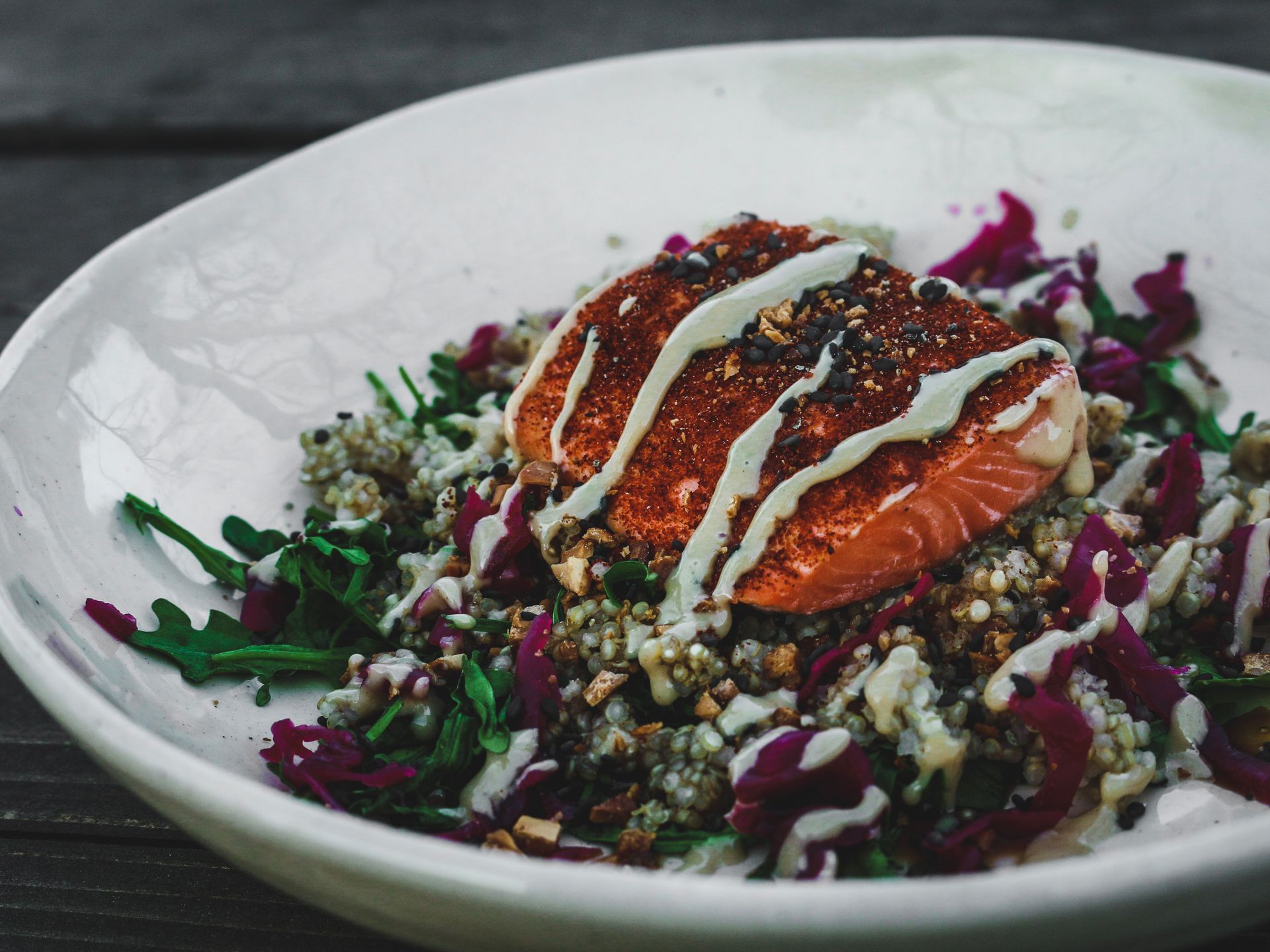
Wild-Caught Salmon over a warm Arugula Quinoa Salad
Servings: 4
Ingredients:
- 4 salmon fillets
- 2/3 cup dry quinoa (cooks to 2 cups)
- 6 cups arugula
- ½ cup Wildbrine red beet and cabbage kraut
- ½ cup walnuts
- 1 Tbsp black sesame seeds
- 2 Tbsps coconut oil
- 2 lemons
- 1 tsp paprika
- 1 tsp coconut sugar
- 2 Tbsps tahini
- salt and pepper to taste
Directions:
- Bring salmon to room temp for 5ish minutes. Pat dry with paper towels. Season with paprika, ½ tsp coconut sugar, and a dash of salt and pepper.
- Prepare quinoa according to package instructions. Using a 1:1.5 ratio of quinoa to water makes for fluffier quinoa, but do whatever floats your boat.
- Heat a large skillet to medium-high heat.
- Add 2 tsps coconut oil to the pan, then add arugula and a sprinkle of sea salt. Cover and cook for about 2-3 minutes, stirring a few times so that all arugula is slightly wilted. It doesn’t need to be cooked to a crisp!
- Plate the cooked quinoa and arugula. Stir in a spoonful or two of kraut.
- Add 1 Tbsp coconut oil to the pan. Lay the salmon, skin down, in the oil (gently so it doesn’t splash).
- Cook, covered, for 3-4 minutes until the flesh is cooked throughout. Flip the filets and continue cooking for 3-4 minutes until slightly browned and crispy.
- Remove salmon from the skillet and plate on top of arugula, quinoa, kraut mixture.
- Add 1 tsp coconut oil to skillet. Crush walnuts (simply crush in your hands!) into skillet and sprinkle ½ tsp coconut sugar. Sauté for 2-3 minutes, stirring often until lightly toasted.
- Top with walnuts, paprika, black sesame seeds, lemon juice, and a drizzle of tahini.
- Impress yo friends and yoself.
I promise you don’t need a culinary degree to create something delicious, and you don’t need a nutrition degree to create something wholesome. Healthy cooking can be easy, enjoyable, delicious and fun. You might even find that it brings you joy, just like it brings me joy to share this recipe with you!
Now go fill up your shopping carts with delicious real food and fight that inflammation that’s dragging you down! (It’s tough love guys)
-Taylor
Be sure to be sure to follow me on Instagram @plateandcanvas for more recipes and nutrition tips!
Continue Reading









